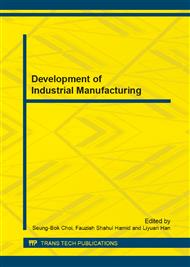p.203
p.210
p.214
p.218
p.222
p.227
p.232
p.236
p.240
Optimize Selected of Anti-Attrition Ridge Parameters through Numerical Simulation in CFB Boiler Blended with Waste Sludge
Abstract:
Combustion in boiler blended with waste sludge can cause serious abrasion in the furnace. In this paper, Fluent6.3 was applied to establish three-dimensional numerical combustion model based on k-ε turbulence equations and Lagrangian stochastic particle trajectory to analyze a CFB (Circulating Fluidized Bed) boiler of a power plant in Guangdong province. The results show that anti-attritions will break the ring-core adherent regurgitation of the particles thus reducing erosion of particles made to the furnace wall. Furthermore, a setting of three anti-attrition ridges can prolongate the life of the wall by 2.49 times. Increasing numbers and the length of ridges are beneficial to wall, which should be limited shorter than 150mm duo to heat tube slagging, and implementing a shape of trapezoid instead of rectangle all are derived as enhancements to the feature of anti-attrition of CFB.
Info:
Periodical:
Pages:
222-226
Citation:
Online since:
February 2014
Authors:
Price:
Сopyright:
© 2014 Trans Tech Publications Ltd. All Rights Reserved
Share:
Citation:


